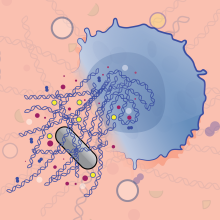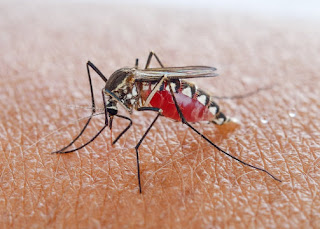A high-fat, low-carbohydrate diet like the Keto regimen has its fans, but influenza apparently isn't one of them.
Mice nourished a ketogenic diet were better ready to battle the influenza infection than mice encouraged nourishment high in starches, as per another Yale University study distributed Nov. 15 in the diary Science Immunology.
The ketogenic diet - which for individuals incorporates meat, fish, poultry, and non-dull vegetables - actuates a subset of T cells in the lungs not recently connected with the safe framework's reaction to flu, upgrading bodily fluid generation from aviation route cells that can adequately trap the infection, the analysts report.
"This was an absolutely startling discovering," said co-senior creator Akiko Iwasaki, the Waldemar Von Zedtwitz Professor of Immunobiology and Molecular, Cellular and Developmental Biology, and an agent of the Howard Hughes Medical Institute.
The exploration venture was the brainchild of two learners - one working in Iwasaki's lab and the other with co-senior creator Visha Deep Dixit, the Waldemar Von Zedtwitz Professor of Comparative Medicine and of Immunobiology. Ryan Molony worked in Iwasaki's lab, which had discovered that safe framework activators called inflammasomes can cause hurtful resistant framework reactions in their host. Emily Goldberg worked in Dixit's lab, which had demonstrated that the ketogenic diet blocked arrangement of inflammasomes.
The two thought about whether diet could influence invulnerable framework reaction to pathogens, for example, the influenza infection.
They indicated that mice bolstered a ketogenic diet and contaminated with the flu infection had a higher endurance rate than mice on a high-carb typical eating regimen. In particular, the analysts found that the ketogenic diet set off the arrival of gamma delta T cells, resistant framework cells that produce bodily fluid in the cell linings of the lung - while the high-starch diet didn't.
At the point when mice were reproduced without the quality that codes for gamma delta T cells, the ketogenic diet gave no insurance against the flu infection.
The ketogenic diet - which for individuals incorporates meat, fish, poultry, and non-dull vegetables - actuates a subset of T cells in the lungs not recently connected with the safe framework's reaction to flu, upgrading bodily fluid generation from aviation route cells that can adequately trap the infection, the analysts report.
"This was an absolutely startling discovering," said co-senior creator Akiko Iwasaki, the Waldemar Von Zedtwitz Professor of Immunobiology and Molecular, Cellular and Developmental Biology, and an agent of the Howard Hughes Medical Institute.
The exploration venture was the brainchild of two learners - one working in Iwasaki's lab and the other with co-senior creator Visha Deep Dixit, the Waldemar Von Zedtwitz Professor of Comparative Medicine and of Immunobiology. Ryan Molony worked in Iwasaki's lab, which had discovered that safe framework activators called inflammasomes can cause hurtful resistant framework reactions in their host. Emily Goldberg worked in Dixit's lab, which had demonstrated that the ketogenic diet blocked arrangement of inflammasomes.
The two thought about whether diet could influence invulnerable framework reaction to pathogens, for example, the influenza infection.
They indicated that mice bolstered a ketogenic diet and contaminated with the flu infection had a higher endurance rate than mice on a high-carb typical eating regimen. In particular, the analysts found that the ketogenic diet set off the arrival of gamma delta T cells, resistant framework cells that produce bodily fluid in the cell linings of the lung - while the high-starch diet didn't.
At the point when mice were reproduced without the quality that codes for gamma delta T cells, the ketogenic diet gave no insurance against the flu infection.
Email us at: clinicalmicrobiology@pulsusgathering.com




Comments
Post a Comment